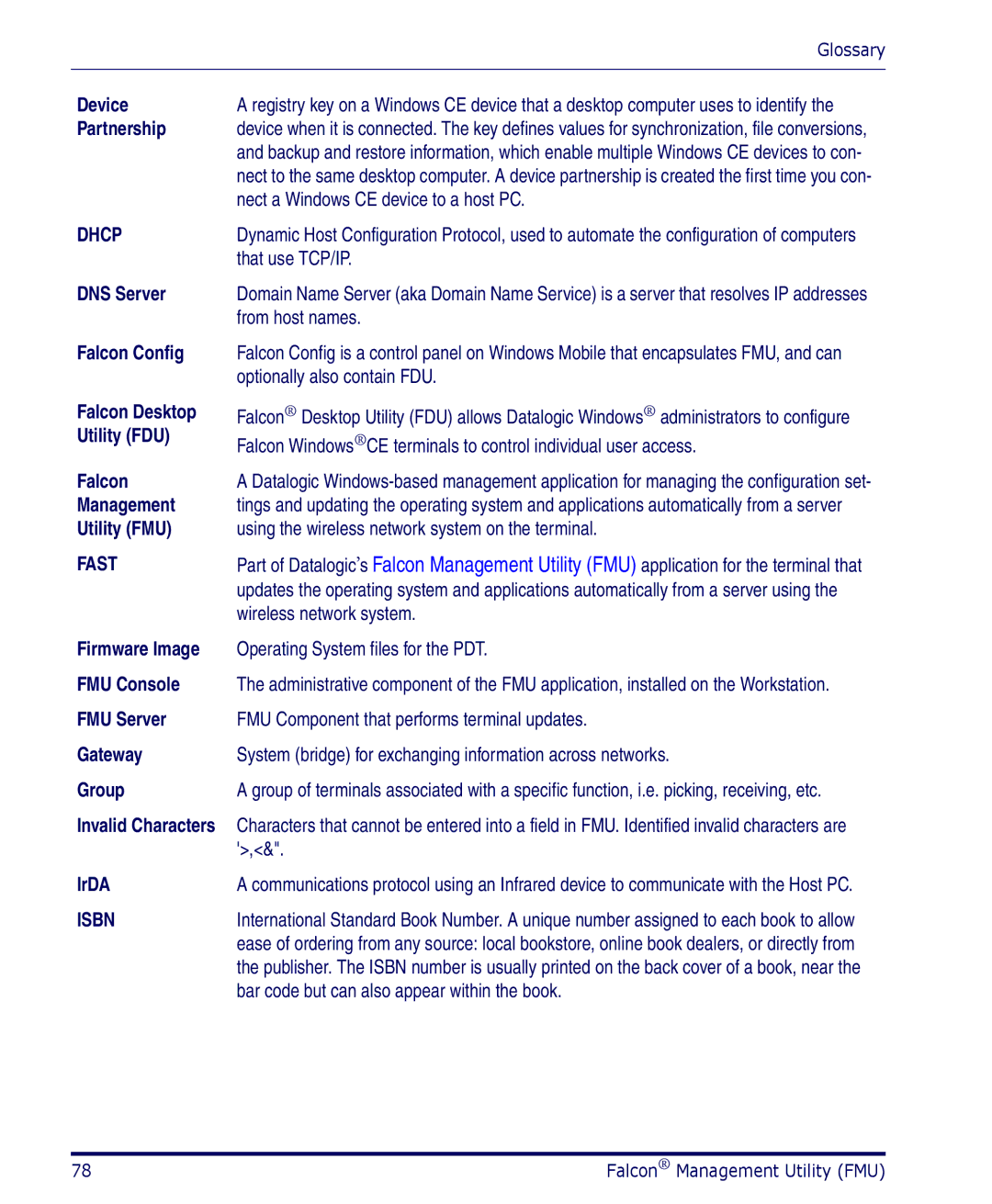| Glossary |
|
|
Device | A registry key on a Windows CE device that a desktop computer uses to identify the |
Partnership | device when it is connected. The key defines values for synchronization, file conversions, |
| and backup and restore information, which enable multiple Windows CE devices to con- |
| nect to the same desktop computer. A device partnership is created the first time you con- |
| nect a Windows CE device to a host PC. |
DHCP | Dynamic Host Configuration Protocol, used to automate the configuration of computers |
| that use TCP/IP. |
DNS Server | Domain Name Server (aka Domain Name Service) is a server that resolves IP addresses |
| from host names. |
Falcon Config | Falcon Config is a control panel on Windows Mobile that encapsulates FMU, and can |
| optionally also contain FDU. |
Falcon Desktop Utility (FDU)
Falcon
Management
Utility (FMU)
FAST
Falcon® Desktop Utility (FDU) allows Datalogic Windows® administrators to configure Falcon Windows®CE terminals to control individual user access.
ADatalogic
Part of Datalogic’s Falcon Management Utility (FMU) application for the terminal that updates the operating system and applications automatically from a server using the wireless network system.
Firmware Image | Operating System files for the PDT. |
FMU Console | The administrative component of the FMU application, installed on the Workstation. |
FMU Server | FMU Component that performs terminal updates. |
Gateway | System (bridge) for exchanging information across networks. |
Group | A group of terminals associated with a specific function, i.e. picking, receiving, etc. |
Invalid Characters | Characters that cannot be entered into a field in FMU. Identified invalid characters are |
| '>,<&". |
IrDA | A communications protocol using an Infrared device to communicate with the Host PC. |
ISBN | International Standard Book Number. A unique number assigned to each book to allow |
| ease of ordering from any source: local bookstore, online book dealers, or directly from |
| the publisher. The ISBN number is usually printed on the back cover of a book, near the |
| bar code but can also appear within the book. |
78 | Falcon® Management Utility (FMU) |
